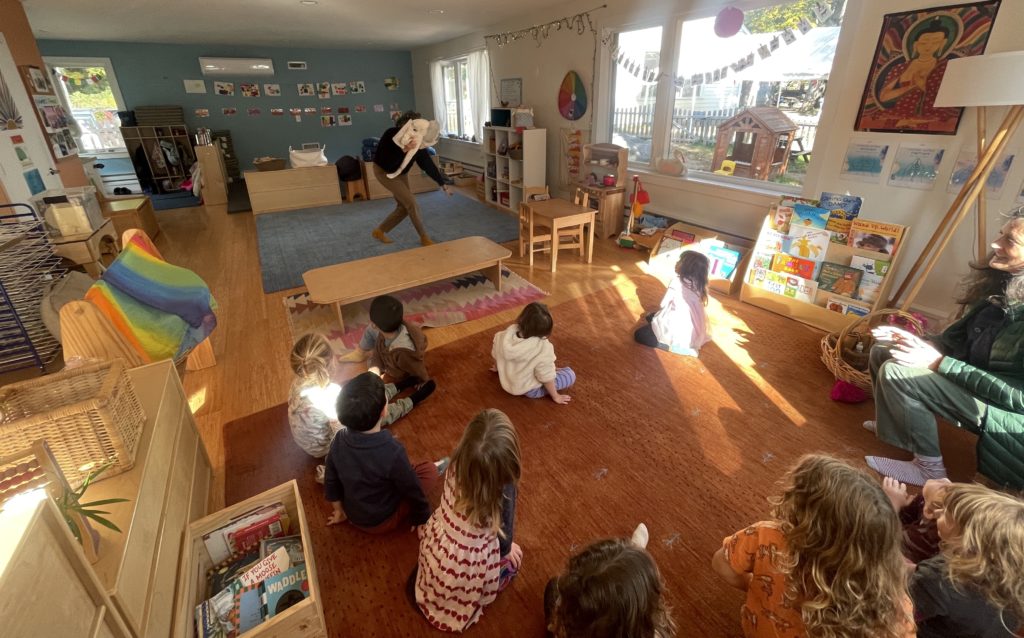MWE Curriculum
Weaving traditional wisdom into modern learning environments
Imagine a future in which basic sanity and kindness prevail. Where it’s cool to be wise, where wealth is redefined to include generosity, and where people look at the big picture
Welcome! MWE is driven by educators who are inspired by the teachings of the Buddha and see the enormous potential of introducing the dharma to children in creative age-appropriate ways. We believe that the timeless wisdom of the dharma can make the modern world a better place by supporting children to understand the nature of reality, think for themselves, and enjoy the benefits of helping others. The MWE team welcomes educators to participate in this creative endeavor and we strive to provide tools and resources that will support your individual journey.
MWE Strives to be Non Denominational
MWE serves and respects the beautiful array of Buddhist traditions, celebrating the abundance of Buddhist cultures and practices. We are not tethered to one culture or tradition, rather we put the child’s experience first. By taking a non-denominational and inclusive approach in its educational materials and initiatives, MWE honors differences and identifies similarities across lineages.
Meaningful and comprehensive student experiences that introduce the dharma to children and become integrated into the students’ way of being in the world is the goal of the Middle Way Education Curriculum.
Since 2017, MWE has been researching and developing materials that support teachers, parents, and school leaders to bring dharma into the classroom. We are currently codifying our developmental framework, benchmarks, standards, indicators, taking inspiration from our friends at the Cloud Institute and working with education professionals.
Overview
The Middle Way model of education is not dogmatic, sectarian, or moralistic, we focus on frameworks and techniques that uncover pre-existing, naturally arising wisdom. This view aligns in remarkable ways with the current scientific understandings of human development, which play a large part in how we approach education. Within these structures, the joy of learning abounds.
The Five Domains of Learning
The Five Domains of Learning are areas of study that ensure a well-rounded education: Logic and Reason; Cultural Preservation; The Art of Joy; Embodiment; and Contemplation. Our 200 learning indicators are organized by these domains. Teachers use the Five Domains of Learning to plan curricula so that children experience a balance of disciplines throughout the week. On a deeper level, the domains are aligned with the five elements (water, earth, fire, air, and space which are reflected in longer inquiries that students undertake at different points in their education. On a subtle level, the Domains draw from the wisdom energies of the Buddhist mandala which echo through multiple facets of the curriculum and campus. Read More
Thematic Units
The primary way teaching and learning is organized across the curriculum is through multi-week thematic units. Not every unit needs to be covered in each year and each can be implemented as a stand alone camp or program. Currently MWE has developed eight themes with the help of the teachers at the Middle Way School of the Hudson Valley and other curriculum specialists: Taking Your Seat, Lineage, Refuge, Bodhicitta, Cause and Effect, Interconnection, Impermanence, and Harmony. Each unit includes big ideas, essential questions, benchmarks, outcomes and indicators across the five domains. The themes can be coupled with secular/scientific companion units or areas of inquiry. Read More
Three Areas of Engagement
In order to function in a variety of cultural, geographical, and educational environments, the Middle Way curriculum is designed to be modified. It can be adapted to meet the specific needs of a community based on three primary spheres of learning, or focus areas. The spheres accommodate traditional academic areas, Buddhist teachings, and localized themes or study areas. The three areas exist separately and overlap to create an integrated whole that unifies the school program.
At the Middle Way School of the Hudson Valley, three areas of focus are: Academics, Living Sciences, and Dharma. Dharma is the sphere that must be present for a school to adopt the Middle Way Model. Read More
Developmental Stages
The key that unlocks the MWE model is the teacher’s ability to connect with each child with insight and compassion. Being attuned to the evolving state of each child’s body, speech, and mind is essential to the practice of teaching in a meaningful way. MWE teacher enrichment programs are tailored to the environment and culture of the school. In particular, teachers are supported in their own self-knowledge and awareness practices to help hone their teaching practice. Middle Way relies on the latest in neuroscience to understand children’s chronological ages and developmental stages.
School Culture
The Noble Eightfold Path—eight practices that cultivate wisdom, compassion, and discipline—provide the framework that shapes school culture and teaching methodology. These classic principles offer timeless guidance on how to create harmony through our point of view; intention; speech; action; livelihood; effort; mindfulness; and concentration. These are further explored through the lens of prajna, samadhi and shila—wisdom, mental discipline, and conduct. We begin with conduct, creating an atmosphere for concentration and wisdom to arise, where children and staff feel safe and inspired.
“We are trying to prepare and train some of the next generation of human beings through Buddhist values and Buddha’s teaching of love, compassion, and wisdom. We are also hoping that through training the next generation of Buddhists, the authentic Buddhadharma can continue to flourish and that knowledgeable practitioners of the dharma will carry on the lineage through their love and support, and study and practice of the teachings. So we are developing a model of education.” — Dzongsar Khyentse Rinpoche

